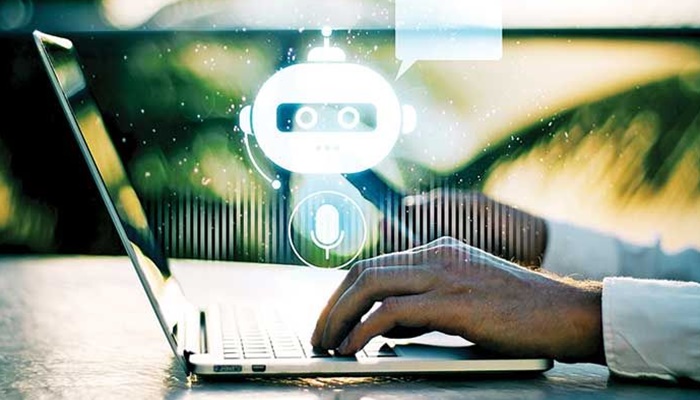In quiet boardrooms of Bengaluru, in bustling call centres across Gurugram, and on the farmlands of Punjab, a storm is brewing—a silent, algorithmic revolution. Artificial Intelligence, once a curious assistant for search and spreadsheets, is evolving into something far more potent: agentic AI, capable of reasoning, decision-making, and executing entire workflows with minimal human oversight.
Within five years, it will be everywhere. Within ten, it may reshape the very idea of “work”. And for India—a nation both young and restless—the shock could be unprecedented.
The First Wave (2025–2030): White-Collar Meltdown
AI doesn’t need sleep, doesn’t unionise, and doesn’t ask for tea breaks. By 2030, India’s outsourcing giants—call centres, data entry hubs, and routine coding shops—will be shadows of their former selves. AI-driven systems will answer customer queries, draft contracts, generate code, and even predict litigation outcomes faster than any human team.
In the corporate corridors, accountants, junior lawyers, paralegals, and clerical staff will find their roles dwindling by 50–70%. HR departments will lean on AI to screen, interview, and even assess employee morale, leaving only a thin layer of human overseers.
Advertising and media will not be spared. Already, AI can churn out entire campaigns, videos, jingles, and strategies in seconds. By the end of the decade, the bulk of India’s creative output may be generated by machines, leaving humans to handle brand vision, cultural nuance, and storytelling.
For the average 25-year-old, living on EMI-fueled consumption rather than savings, the reality will be harsh: fewer stable jobs, more gig-based income, and a pressing need to “work with” AI rather than against it.
The Slow March (2030–2035): Blue-Collar & Public Sector Upheaval
Many believe physical work is safe. But by 2035, robotics and autonomous systems will encroach here, too.
- In farming,AI-powered drones, soil sensors, and autonomous tractors will manage large agribusinesses, pushing small farmers toward AI-managed cooperativesor out of agriculture entirely.
- In policing and defence, drones, predictive AI, and robotic patrol units will dominate cities and borders, while cyber and AI warfare replaces the conventional soldier.
- In education, AI tutors will handle most standardised teaching; one teacher, aided by AI, could guide 300 students simultaneously, shifting teachers from lecturers to mentors and motivators.
Even government jobs, long a refuge for India’s middle class, will not escape. Clerks, assistants, and most back-office roles will disappear as AI-powered digital governance takes over. Only policy-making, inspection, and field roles will remain human-driven.
Who Survives?
Across every sector, a pattern emerges: routine tasks vanish first, while trust, creativity, strategy, and emotional intelligence remain priceless.
- Doctors and lawyers will thrive only if they shift from routine checks and filings to complex cases and human connection.
- Teachers must evolve into facilitators of curiosity, not mere deliverers of syllabus.
- Salespeople and front desk workers will survive only where relationships and personalisation matter more than transactions.
- Architects, engineers, and creatives must learn to direct AI tools rather than compete with them.
In essence, the future belongs to those who can imagine, prompt, and orchestrate AI, not just execute tasks.
The Indian Question: Utopia or Chaos?
For the West, a solution is already on the table: Universal Basic Income (UBI), funded by taxing AI-driven corporations, so every citizen can survive even without traditional employment.
For India, this is a fiscal Everest. Paying even Rs 5,000 per month to a billion people would cost ₹60 lakh crore annually—nearly the size of the central government’s entire budget. Without such safety nets, the wealth gap could explode, creating two Indias:
- A digital elite (15–20%) fluent in AI, globally competitive, and immensely wealthy.
- The remaining majority, scrambling for low-paying gigs or relying on patchwork welfare.
Yet, India also has a unique chance to leapfrog.
- Vernacular AI tools could democratise access, bringing Tier-2 and Tier-3 cities into the AI economy.
- With a median age of 28, a massive youth workforce could be reskilled into AI management, robotics, and green tech, positioning India as a global AI-powered services hub rather than a casualty.
The Next Decade: A New Definition of “Work”
By 2035, India may no longer measure life by “jobs” but by access to resources, creativity, and contribution. People may live on a combination of:
- Government stipends or targeted cash transfers.
- AI-assisted micro-entrepreneurship and gig work.
- Creative and strategic roles where humans still outshine machines.
Whether this becomes a renaissance or a reckoning depends on what India does now—building AI literacy, localised tools, reskilling programmes, and bold policies to keep its billion-strong population not just surviving but thriving.
The AI wave is coming. The question is: Will India ride it—or be swept away?
Source – https://garhwalpost.in/the-next-decade-will-india-survive-the-ai-job-apocalypse/




















